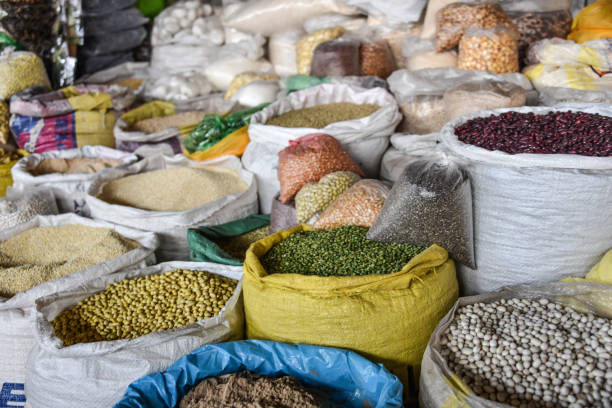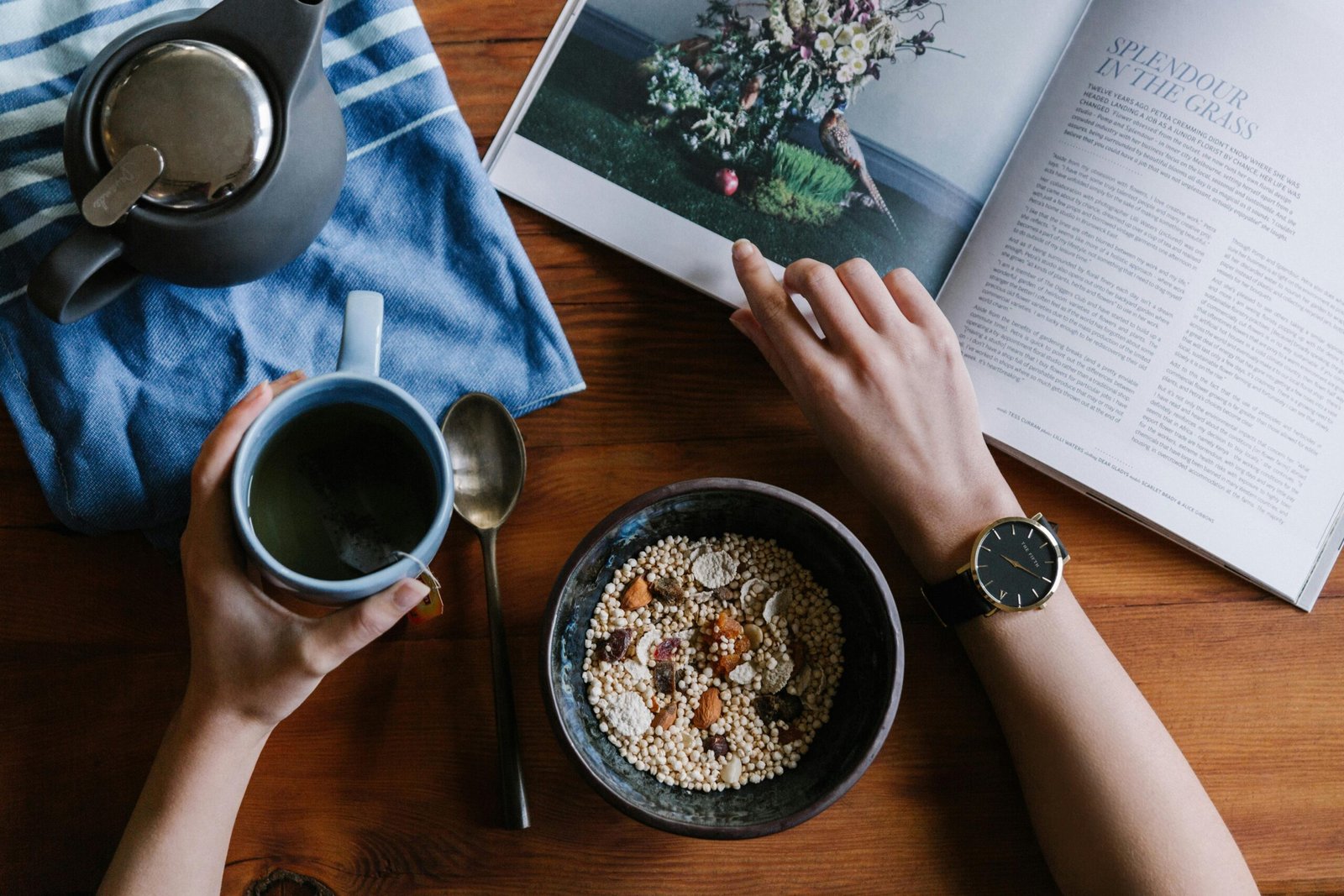Introduction
Ancient Grain in a Healthy Cereal: Ingredients
Ancient grains are experiencing a resurgence in popularity, and for good reason. These grains have been cultivated for thousands of years, providing essential nutrients and health benefits. They include varieties like quinoa, amaranth, farro, spelt, and millet. Unlike modern, highly processed grains, ancient grains remain largely unchanged from their original forms. This means they often retain more of their nutritional value, making them an excellent choice for those looking to improve their diet.
The importance of ancient grains in modern diets cannot be overstated. As people become more health-conscious, there is a growing interest in foods that offer both nutrition and natural origins. Ancient grains fit this bill perfectly. They are packed with vitamins, minerals, fiber, and protein, all of which contribute to better overall health. Additionally, these grains are versatile and can be used in a variety of recipes, from breakfast cereals to salads and side dishes.
Incorporating ancient grains into your diet is a step towards embracing a more wholesome, balanced way of eating. These grains offer a robust nutritional profile that supports heart health, digestive health, and sustained energy levels. Moreover, they can be a great option for those with dietary restrictions, as many ancient grains are gluten-free. As we move towards a more health-conscious society, the inclusion of ancient grains in our daily meals becomes increasingly relevant.
Furthermore, ancient grains are not only beneficial for personal health but also for the environment. Many of these grains are grown using sustainable farming practices that have been passed down through generations. This makes them a more environmentally friendly choice compared to some modern agricultural methods. By choosing ancient grains, you are supporting practices that promote soil health and biodiversity.
Nutritional Profile of Ancient Grains

A. High Fiber Content
One of the standout features of ancient grains is their high fiber content. Fiber is crucial for maintaining a healthy digestive system. It helps to regulate bowel movements and prevent constipation. Moreover, a diet rich in fiber can help to lower cholesterol levels and reduce the risk of heart disease. Ancient grains like quinoa and farro are excellent sources of dietary fiber.
Fiber also plays a significant role in weight management. Foods that are high in fiber tend to be more filling, which can help to reduce overall calorie intake. This is particularly beneficial for those looking to lose or maintain their weight. Additionally, fiber slows down the absorption of sugar into the bloodstream, which can help to stabilize blood sugar levels. This makes ancient grains a great option for individuals with diabetes or those looking to prevent the condition.
The high fiber content in ancient grains also supports gut health. A healthy gut microbiome is essential for overall well-being, and fiber acts as a prebiotic, feeding the beneficial bacteria in the gut. By incorporating ancient grains into your diet, you are promoting a healthy digestive system and supporting your body’s ability to absorb nutrients effectively.
B. Rich in Vitamins and Minerals
Ancient grains are not only high in fiber but also rich in essential vitamins and minerals. For example, quinoa is a great source of iron, which is important for the production of red blood cells and the prevention of anemia. Farro is rich in magnesium, which supports muscle and nerve function, as well as bone health. Amaranth is packed with calcium, which is crucial for maintaining strong bones and teeth.
Vitamins found in ancient grains include B vitamins, which play a key role in energy production and the maintenance of a healthy nervous system. These vitamins are also important for brain function and the production of DNA. Including ancient grains in your diet can help to ensure that you are getting a wide range of essential nutrients that support overall health and well-being.
Minerals such as zinc and selenium, found in many ancient grains, are important for immune function and the prevention of oxidative stress. These minerals act as antioxidants, protecting the body from damage caused by free radicals. By incorporating ancient grains into your daily meals, you are boosting your intake of these vital nutrients and supporting your body’s natural defenses.
C. Source of Plant-Based Protein
Ancient grains are an excellent source of plant-based protein, making them a valuable addition to vegetarian and vegan diets. Quinoa, for instance, is considered a complete protein, meaning it contains all nine essential amino acids that the body cannot produce on its own. This is relatively rare for plant-based foods and makes quinoa a particularly valuable grain for those who do not consume animal products.
Protein is essential for the growth and repair of tissues, the production of enzymes and hormones, and the maintenance of muscle mass. Including ancient grains in your diet can help to ensure that you are meeting your daily protein needs. This is especially important for active individuals and those who are looking to build or maintain muscle mass.
In addition to being a source of complete protein, ancient grains like amaranth and spelt also provide a good amount of protein. These grains can be used as a base for a variety of meals, from hearty breakfast bowls to protein-rich salads and side dishes. By incorporating a variety of ancient grains into your diet, you can ensure that you are getting a diverse range of amino acids and other essential nutrients.
Benefits of Including Ancient Grain in a Healthy Cereal: Ingredients

A. Enhanced Nutritional Value
Incorporating ancient grains into your cereal can significantly enhance its nutritional value. Unlike many conventional cereals that are often high in sugar and low in essential nutrients, cereals made with ancient grains provide a wealth of vitamins, minerals, fiber, and protein. This makes them a much healthier option for starting your day.
Ancient grains such as quinoa, amaranth, and millet are nutrient-dense and offer a balanced mix of carbohydrates, protein, and healthy fats. This combination helps to provide sustained energy throughout the morning and keeps you feeling full for longer. By choosing cereals that contain these grains, you are ensuring that your breakfast is not only delicious but also highly nutritious.
Moreover, ancient grains are typically whole grains, meaning they retain their bran, germ, and endosperm. This is in contrast to refined grains, which have been stripped of these components and, consequently, much of their nutritional value. Whole grains are associated with numerous health benefits, including a reduced risk of heart disease, diabetes, and certain cancers. By opting for cereals made with ancient grains, you are making a choice that supports long-term health and well-being.
B. Improved Taste and Texture
Another benefit of including ancient grain in a healthy cereal is the improved taste and texture they bring. Ancient grains have unique flavors and textures that can make your breakfast more enjoyable and satisfying. For example, quinoa has a slightly nutty flavor and a delicate, fluffy texture, while farro offers a chewy, hearty consistency. These varied textures and flavors can add interest and complexity to your cereal, making it a more pleasurable eating experience.
In addition to enhancing the taste and texture of your cereal, ancient grains also provide a natural sweetness that can help reduce the need for added sugars. Many conventional cereals rely on added sugars to enhance their flavor, but this can contribute to a range of health issues, including weight gain and increased risk of chronic diseases. By choosing cereals made with ancient grains, you can enjoy a naturally sweet and flavorful breakfast without the need for excessive sugar.
Furthermore, the unique textures of ancient grains can add a satisfying crunch to your cereal, making it more enjoyable to eat. This can be particularly beneficial for those who find conventional cereals to be too soft or lacking in texture. By incorporating a variety of ancient grains into your cereal, you can create a more dynamic and enjoyable breakfast experience.
C. Sustainability and Environmental Benefits
Choosing cereals made with ancient grains also has significant sustainability and environmental benefits. Many ancient grains are grown using traditional farming practices that are more sustainable and environmentally friendly than modern agricultural methods. These practices often involve crop rotation, natural pest control, and minimal use of chemical fertilizers and pesticides. As a result, they help to preserve soil health, protect biodiversity, and reduce the environmental impact of agriculture.
In addition to being more sustainable, ancient grains often require less water and are more resilient to changing climate conditions. This makes them a more reliable and environmentally friendly option compared to some modern crops that are more resource-intensive and less adaptable. By choosing cereals made with ancient grains, you are supporting sustainable farming practices and contributing to a healthier planet.
Furthermore, the cultivation of ancient grains helps to preserve agricultural biodiversity. Many of these grains have been cultivated for thousands of years and have unique genetic traits that make them valuable for breeding and research. By supporting the production and consumption of ancient grains, you are helping to preserve this important genetic diversity for future generations.
Popular Ancient Grain in a Healthy Cereal: Ingredients

A. Quinoa
Quinoa is one of the most popular ancient grains used in healthy cereals, and for good reason. It is a complete protein, meaning it contains all nine essential amino acids that the body needs. This makes it an excellent choice for vegetarians and vegans who may have difficulty getting enough protein from their diet. Additionally, quinoa is rich in fiber, vitamins, and minerals, making it a highly nutritious addition to any meal.
The nutty flavor and fluffy texture of quinoa make it a versatile ingredient that can be used in a variety of recipes. In cereals, quinoa adds a pleasant crunch and a subtle, nutty flavor that complements other ingredients. Whether you prefer hot cereal, like quinoa porridge, or cold cereal, like quinoa granola, this ancient grain can enhance the nutritional value and taste of your breakfast.
Moreover, quinoa is gluten-free, making it a great option for those with celiac disease or gluten intolerance. Its high nutrient content and versatility make quinoa a popular choice for health-conscious consumers looking to add more ancient grains to their diet.
B. Amaranth
Amaranth is another ancient grain that is commonly used in healthy cereals. It is packed with nutrients, including protein, fiber, and a range of vitamins and minerals. Like quinoa, amaranth is also a complete protein, making it a valuable addition to vegetarian and vegan diets. Its unique properties and high nutritional value make amaranth a popular choice for those looking to improve their diet.
Amaranth has a slightly sweet, nutty flavor and a delicate, crunchy texture. This makes it a great addition to both hot and cold cereals. In hot cereals, amaranth can be cooked into porridge, while in cold cereals, it can be popped or added whole for added crunch. Its versatility and pleasant flavor make amaranth a popular choice for health-conscious consumers.
Additionally, amaranth is gluten-free, making it a suitable option for those with gluten intolerance or celiac disease. Its high nutrient content and unique flavor make amaranth a valuable addition to any healthy cereal.
C. Farro
Farro is an ancient grain that has been cultivated for thousands of years. It is rich in fiber, protein, and a range of vitamins and minerals, making it a highly nutritious addition to any meal. Farro has a slightly nutty flavor and a chewy texture, which adds a pleasant crunch to cereals. Its unique properties and high nutritional value make farro a popular choice for health-conscious consumers.
In cereals, farro can be used in a variety of ways. It can be cooked into a hot porridge, added to granola for added crunch, or used as a base for a cold cereal. Its versatility and pleasant flavor make Farro a valuable addition to any healthy cereal. Additionally, farro is rich in antioxidants, which can help protect the body from damage caused by free radicals. Its high nutrient content and unique flavor make Farro a valuable addition to any healthy cereal.
D. Spelt
Spelt is another ancient grain that is commonly used in healthy cereals. It is rich in fiber, protein, and a range of vitamins and minerals, making it a highly nutritious addition to any meal. Spelt has a slightly sweet, nutty flavor and a chewy texture, which adds a pleasant crunch to cereals. Its unique properties and high nutritional value make it a popular choice for health-conscious consumers.
In cereals, spelling can be used in a variety of ways. It can be cooked into a hot porridge, added to granola for added crunch, or used as a base for a cold cereal. Its versatility and pleasant flavor make it a valuable addition to any healthy cereal. Additionally, spinach is rich in antioxidants, which can help protect the body from damage caused by free radicals. Its high nutrient content and unique flavor make it a valuable addition to any healthy cereal.
E. Millet
Millet is another ancient grain that is commonly used in healthy cereals. It is rich in fiber, protein, and a range of vitamins and minerals, making it a highly nutritious addition to any meal. Millet has a slightly sweet, nutty flavor and a delicate, fluffy texture, which adds a pleasant crunch to cereals. Its unique properties and high nutritional value make millet a popular choice for health-conscious consumers.
In cereals, millet can be used in a variety of ways. It can be cooked into a hot porridge, added to granola for added crunch, or used as a base for a cold cereal. Its versatility and pleasant flavor make millet a valuable addition to any healthy cereal. Additionally, millet is gluten-free, making it a suitable option for those with gluten intolerance or celiac disease. Its high nutrient content and unique flavor make millet a valuable addition to any healthy cereal.
How to Choose and Prepare Healthy Cereals with Ancient Grains

A. Reading Labels and Ingredient Lists
ancient grain in a healthy cereal
Choosing healthy cereals with ancient grains requires careful reading of labels and ingredient lists. Look for cereals that list ancient grains, such as quinoa, amaranth, farro, spelt, or millet, as one of the first ingredients. This indicates that the cereal contains a significant amount of these nutritious grains. Additionally, check for whole grains, as these retain more of their nutritional value compared to refined grains.
Avoid cereals that contain high amounts of added sugars and artificial ingredients. These can negate the health benefits of the ancient grains and contribute to a range of health issues, including weight gain and an increased risk of chronic diseases. Instead, opt for cereals that are sweetened naturally with ingredients like honey or fruit.
Furthermore, pay attention to the fiber and protein content of the cereal. These nutrients are important for maintaining energy levels and promoting satiety. By choosing cereals with high fiber and protein content, you can ensure that your breakfast is both nutritious and satisfying.
B. DIY Cereal Recipes
Creating your own cereal with ancient grains is a great way to ensure that you are getting a nutritious and delicious breakfast. Start by choosing your favorite ancient grains, such as quinoa, amaranth, farro, spelt, or millet. Cook the grains according to package instructions, and then mix them with other nutritious ingredients, such as nuts, seeds, dried fruit, and spices.
For a hot cereal, combine cooked ancient grains with milk or a milk alternative, and heat until warm. Top with fresh fruit, nuts, and a drizzle of honey for added flavor and nutrition. For a cold cereal, mix cooked ancient grains with yogurt or milk and add your favorite toppings. You can also make a batch of homemade granola using ancient grains, oats, nuts, seeds, and a natural sweetener, like honey or maple syrup. Bake until golden and crispy, and store in an airtight container for a quick and easy breakfast option.
By making your own cereal, you have complete control over the ingredients and can customize it to suit your tastes and dietary needs. This ensures that you are getting a healthy, balanced breakfast that supports your overall well-being.
C. Tips for Incorporating Ancient Grains into Your Diet
Incorporating ancient grains into your diet doesn’t have to be difficult. Start by experimenting with different grains and recipes to find what you enjoy. You can add cooked ancient grains to salads, soups, and stir-fries for added nutrition and flavor. They can also be used as a base for grain bowls, mixed with vegetables, protein, and a flavorful dressing.
For breakfast, try making porridge with ancient grains or adding them to your smoothie for a nutrient boost. You can also use ancient grains in baking, such as in bread, muffins, or pancakes. By incorporating a variety of ancient grains into your meals, you can ensure that you are getting a diverse range of nutrients and enjoying a variety of flavors and textures.
Furthermore, consider swapping out refined grains for ancient grains in your favorite recipes. For example, use quinoa instead of rice or farro instead of pasta. These simple substitutions can help to increase the nutritional value of your meals and support your overall health.
Conclusion
A. Recap of Key Points
In conclusion, Ancient Grain in a Healthy Cereal: Ingredients. They are rich in fiber, protein, vitamins, and minerals, making them a highly nutritious option for meals and snacks. Including ancient grains in your cereal can enhance its nutritional value, improve its taste and texture, and provide sustainability and environmental benefits. Popular ancient ancient grain in a healthy cereal include quinoa, amaranth, farro, spelt, and millet. By choosing cereals made with these grains or making your own, you can ensure that your breakfast is both delicious and nutritious.
B. Encouragement to Try Ancient Grain in a Healthy Cereal: Ingredients
If you haven’t yet tried ancient grain cereals, now is the perfect time to start. These nutritious grains offer a wealth of health benefits and can be a delicious and satisfying addition to your breakfast routine. Whether you choose to buy cereals made with ancient grains or make your own, incorporating these grains into your diet can support your overall health and well-being. So why not give ancient grain cereals a try and experience the benefits for yourself?



Vitazen Keto Gummies I appreciate you sharing this blog post. Thanks Again. Cool.
Стоимость дипломов высшего и среднего образования и процесс их получения